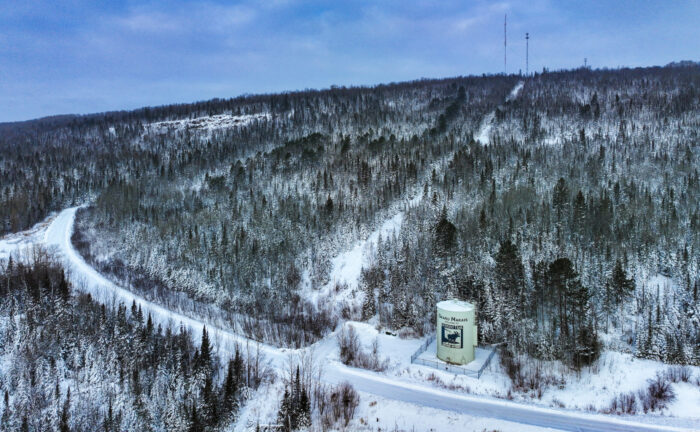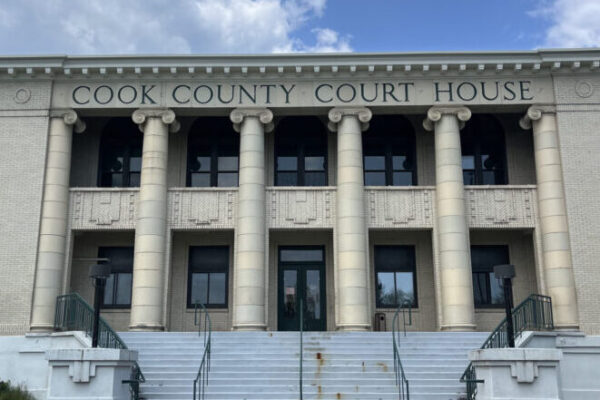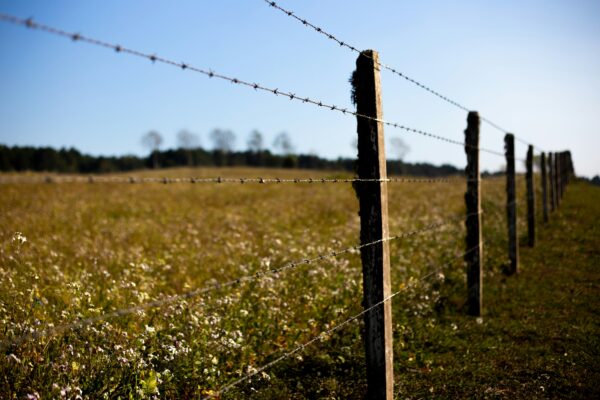County board indicates intention to purchase 80-acre parcel adjacent to proposed Sawtooth Bluff park
A decades-long discussion between a Cook County property owner and the county board may come to a close this year.
At their April 22 meeting, the Board of Commissioners established their intent to purchase an 80-acre parcel owned by John Scheef located on the hillside above Grand Marais.
The property, often referred to as the Scheef Property, is landlocked, without road access. It abuts the public land that the City of Grand Marais and Cook County have designated for the proposed Sawtooth Bluff park on the north side of Grand Marais. Establishing the park would include building a camping area and trails for a variety of activities, with the hope of gaining designation as regionally significant.
The future of that park is unclear, though in recent months both the county board and the County Parks and Trails Commission have discussed it. Earlier this year, the Parks and Trails Commission conducted a public survey to reengage the community in the project.
Scheef has owned the property since 2005, and over the years, he has made several attempts to gain an easement to access to it. An easement for the property could cut through the parcel earmarked for the Sawtooth Bluff park.
Historically, he has faced opposition from neighboring property owners about the potential development of the parcel. At the April 22 meeting, a property owner on Old Ski Hill Road appeared for public comment to express concern about what developing the parcel would mean for the area. Concerns have ranged from the aesthetics of the hillside to the potential environmental impacts that development might include.
Recently, an approved plat came to light for a road that would provide access to the Scheef property via the Old Ski Hill Road. The plat dates back to the early 1900s, and reflects grid-style planning for city streets. It was generally agreed upon at the meeting that the construction of a road based on that plat would prove to be disruptive to the hillside environment and neighborhood.
Acquiring the property
The board decided in a 3-1 vote at the April 22 meeting that they would explore how to purchase the property. Commissioner Ginny Storlie was absent from the meeting. Buying it outright, however, was not the only option that had been considered over the years.
As far back as fifteen years ago, Scheef and the then-county board discussed the potential for a land trade. Over the past decade, a series of efforts have been made to establish the property in a land trust. At the meeting, Scheef said that the process of creating the trust had become prohibitively drawn out and difficult. He also raised the issue of valuation for the property, saying at the meeting that he believed the Minnesota Land Trust assessment of the property to be too low.
Valuing the property
The value of the property is a point of disagreement between the county and Scheef. The most recent assessed value for the entire 80 acres was $175,900, according to county property records.
Scheef has gone through the subdivision process to establish eight 10-acre parcels, which would change the assessment for the upcoming tax year. One of the big questions of value hinges on access and how an easement might impact the value.
County Assessor Bob Thompson spoke at the meeting. His department recently compiled data on property values from their 2024 assessments, which reflected a rise in the value of vacant land in the county. He said during the meeting that access to the parcel, especially if the access reached all eight subdivided lots, would impact the assessed value significantly.
Tyson Smith, Scheef’s attorney, summed up his client’s motivations, saying, “This case started 10 years ago. I’ve been on it for the last five. He has always wanted to pursue a transfer of this property to the public, but he also wants to get his money back.”
He went on to say that Scheef was willing to sell the property to the county for $475,000.
Support for limiting development
One thing that all of the commissioners agreed upon was the wish to protect the hillside from further development. One of the central fears they expressed was that developing the bluff would be both a loss of a natural area right outside of town, and that, based on the beauty of the bluff, any development that happened there would be expensive homes, further contributing to the already high property prices in the county.
“Once something is developed, it is developed, and it is gone,” said Commissioner Deb White. “I am adamantly opposed to development on that hill.”
Other commissioners also weighed in, expressing what they saw as the importance of keeping the hillside free from further housing and infrastructure development. Commissioner Garry Gamble commented on public sentiments expressed about the parcel, “The community and public comment and feedback is, don’t touch that hill. It’s sacred. Let it be what it is.”
“I think green space is important to the people who have lived here for many years. I also think it’s important for the people that are here today and for people that will come here in the future,” added Commissioner Ann Sullivan.
Funding the acquisition
With the board in agreement over the wish to acquire the land, they began some discussion about how to pay for it.
Commissioner Dave Mills said the county could not afford to simply buy the property from Scheef. Mills also argued that the property should receive an additional assessment before the county agreed to the price Scheef was asking.
He was the sole vote against the motion, though he did specify that he supports the acquisition of the land, just not at the asking price of $475,000. He advocated for leaving options open for the county, saying, “I think our direction is clear, but beyond that, I think there’s still a lot that we need to figure out.”
As for the mechanism for purchasing it, the board agreed to look into what options were at their disposal. County Attorney Jeanne Peterson said something like a fundraising campaign run by the county, an idea discussed by the commissioners, would not be possible.
Because there are questions about whether the county will be able to fund the purchase of the property, the motion made by the board left it open for another purchaser to buy the land, with the intention of conveying it to the county for public ownership. The motion included a timeline which specified that the county would have until Dec.1, 2025, to the purchase of the property.
Smith clarified in the meeting that nothing was binding about the vote passed by the board, but that for his client, having the intention to purchase the parcel spelled out was enough for Scheef to agree to hold off selling or changing the land.
Smith said, “It’s enough for us to see that you’re going to help us find a funding source to make this happen.”















